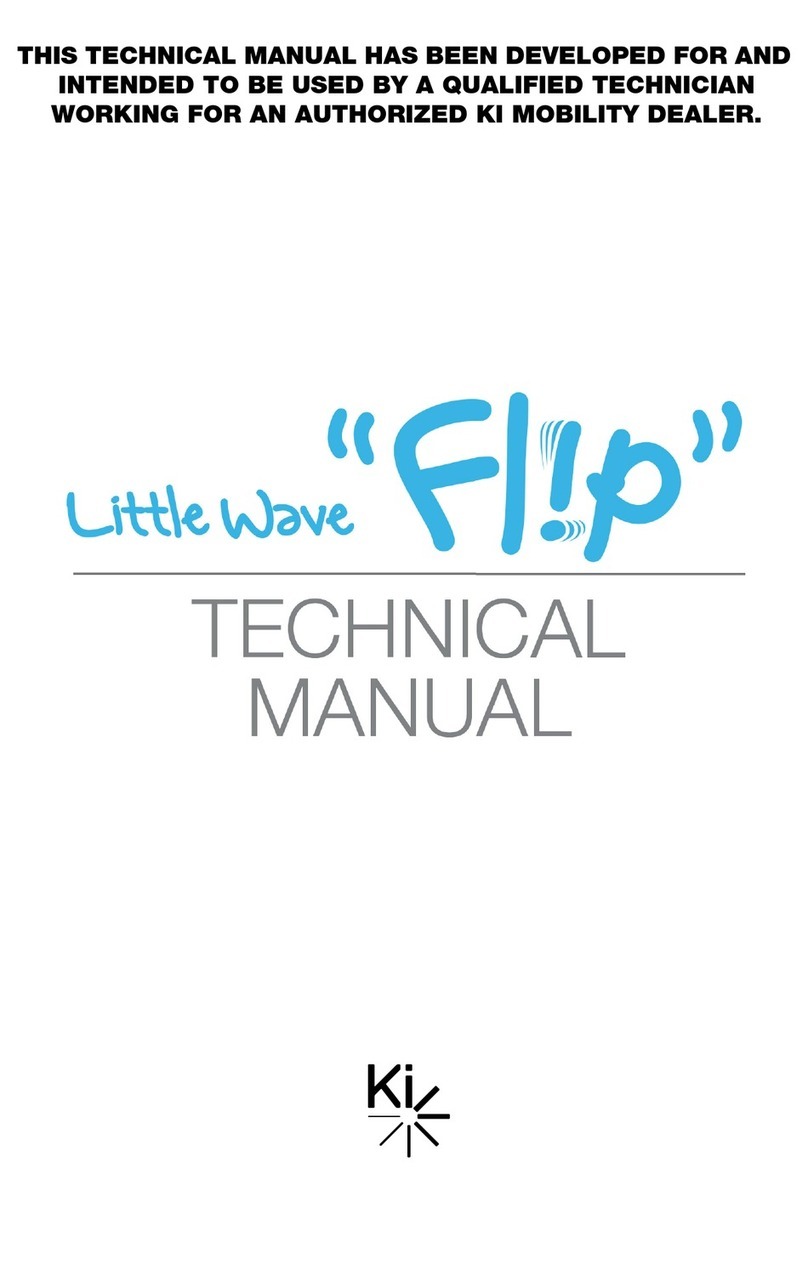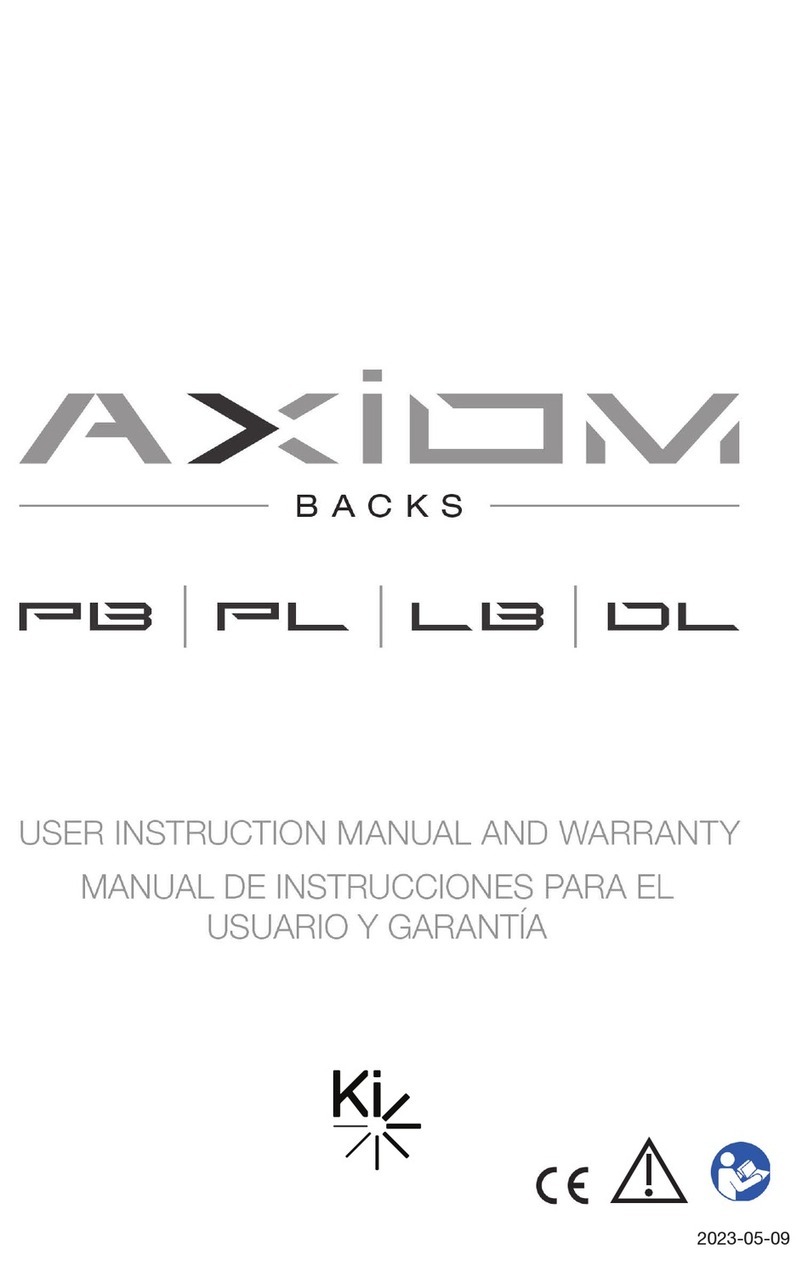
7
III. NOTICE - READ BEFORE USE
H. Riding The Mobility Base (Continued)
• Always look ahead for objects or obstructions that your mobility base could
potentially strike. Striking an object or obstruction could cause your mobility base
to tip unexpectedly resulting in a fall or loss of control. A fall or loss of control could
result in damage to your mobility base, serious injury or death. In addition, striking
an object or obstruction could cause damage to your mobility base. The risk of
injuries and damage to your mobility base when striking an object or obstruction
increases with your rate of speed.
• Using your mobility base on public roads is extremely hazardous and is not
recommended. Mobility base users must obey pedestrian traffic rules. Review the
traffic laws in your own state, some states do not permit mobility base use on public
roads.
• Your balance is affected by the slope of the surfaces you ride on. Because balance
is affected, your mobility base will be less stable when it is at an angle. This is
especially true when riding on a slope sideways. Riding your mobility base on a
slope could cause the mobility base to tip unexpectedly and/or the child to lose
stability resulting in a fall or loss of control. A fall or loss of control could result in
damage to your mobility base, serious injury or death.
• When using your mobility base in public or private areas (including but not limited to
crosswalks, sidewalks, neighborhoods, parking lots and parks) be alert to the
danger of motor vehicles. Due to your low position:
•When lighting is poor use reflective tape on your mobility base and clothing.
•If you have the right-of-way always yield until the driver of the motor vehicle has
seen you.
• Do not ride your mobility base on an escalator. Use of a mobility base on an
escalator could cause a fall, tip-over or loss of control. A fall, tip over or loss of
control could result in damage to your mobility base, severe injury or death.
• Ki Mobility recommends using accessories such as heel loops and calf straps.
When used properly, heel loops and calf straps can aid in preventing your legs and
feet from accidentally slipping off the footplate or footrest potentially causing your
feet to become entangled in the mobility base and its components or strike the
ground. Use of a mobility base without accessories such as properly fitted heel
loops and calf straps can result in a potentially hazardous situation which, if not
avoided, could result in injury.
When using your mobility base always:
• Scan the area well ahead of the mobility base as you are pushing.
• Ensure the surfaces are level and free of obstacles.
• Remove or cover threshold strips between rooms.
• Never push or pull off an object to move forward.
• Make sure there is not a drop off at the bottom of ramps.
• On an up-slope, make sure the mobility base is stable and that you have a solid footing on
the surface below and on the mobility base to prevent tipping backwards.
• On a down-slope, make sure the mobility base is stable and that you have a solid footing
on the surface below and on the mobility base to prevent tipping forwards.
• Ensure all ramps, slopes or curb cuts you attempt to navigate over are compliant with ADA
(Americans with Disabilities Act) guidelines or the equivalent accessibility guidelines in
your region.
ADA Guidelines and more information about accessible design are available at: www.ada.gov

































